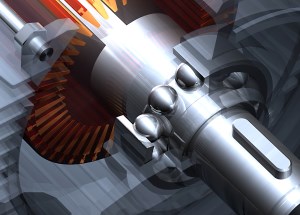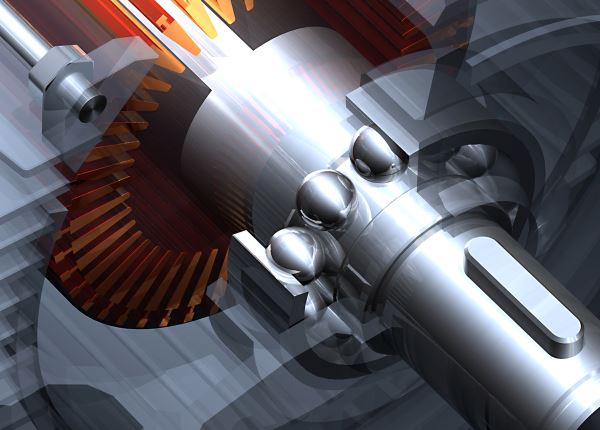The global economic impact of COVID-19 has changed the Australian manufacturing industry forever. This is the first time in modern manufacturing history that demand, supply, and workforce availability are affected at the same time globally.
Varied impacts have been felt across the industry, with 75 percent of organisations globally reporting disruptions to their supply chain – some are seeing dramatic reductions in demand, while others are struggling to meet increased needs.
Business resilience in the new now requires connected, intelligent solutions based on deep industry knowledge.
With Chinese manufacturing companies being the first hit as a result of COVID-19, Australian supply chains were disrupted because they had limited access to supplies that were essential for domestic manufacturing. The supply of items as simple as flour was challenged, with Australian companies able to manufacture flour but not to produce the packaging required to transport and sell it.
Unable to source materials from China, domestic manufacturing had to swiftly pivot to meet local demands.
Demonstrating true business resilience, many Australian distilleries such as Bundaberg Rum, Underground Spirits, and Carlton and United Breweries have shifted their manufacturing to provide essential items for Australians, moving away from alcohol production to hand sanitisers. Likewise, Demold, which provides packaging for groups like Subway, McDonalds, and Jurlique, has shifted production to fill the shortage in medical-grade face masks.
The Australian manufacturing industry is ripe for positive disruption.
Manufacturing coming back onshore
Australian manufacturing has gone from 30 percent of GDP to approximately six percent in 30 years.
COVID-19 has forced a large percentage of manufacturing to come back onshore, and the rapid adaptability of these manufacturing companies proves that Australia is capable of ramping up the sector. If the Australian government invests in manufacturing, this industry can help lead the economic recovery by generating jobs, business income for related sectors, and exports.
The low-valued Australian dollar makes locally manufactured goods more competitive in the overseas market, and the lack of supply from China provides an opportunity to fill the gaps internally.
Australia can’t manufacture everything it wants, but it is capable of manufacturing everything it needs. Pre-COVID-19, Australia depended on imports to a high degree, which created some risk if supply chains were threatened. Moving forward, the Australian government should move away from short-term solution – including cheap, overseas labour – and look to refuel the Australian economy by investing locally.
This could be particularly beneficial when it comes to energy production. Australia’s reliance on fossil fuels creates risk because it is mostly imported – domestic refineries import three-quarters of their feedstock and more than half of refined product consumption in Australia is met by imports.
Renewable energy alternatives
This means Australian industry is subject to fuel price fluctuations caused by supply chain issues, different exchange rates, geopolitical tensions, and more. Creating reliable and robust renewable energy alternatives could reduce this reliance and re-invigorate Australian manufacturing.
Additionally, the global push towards renewable energy via the United Nations Paris Agreement on Climate Change has created a global need – and therefore opportunity – for low-emission and renewable energy developments.
Australia’s largely uninhabited interior offers significant space to build solar and wind farms, particularly in the mid-west of the country. By gaining more control over the production of the energy required to power local manufacturing, Australia can reduce its reliance on overseas providers and control its own destiny.
COVID-19 has meant that Industry 4.0 will increase in relevance and be seen as a higher priority at board level. Manufacturing companies will look to implement contingency plans to prevent similar disruption in the future, looking at what capabilities are required to continue operations, both in terms of employees, and plant and equipment.
This kind of business resilience will require intelligent, connected, and industry-focused solutions based on deep industry knowledge. These solutions must be scalable and purpose-fit, and they must be accessible for employees, regardless of where they’re working.
Many office-based employees have been able to easily shift to remote working as a result of digital integration. Most factories, however, are not designed to be managed remotely, and lack the digital tools and infrastructure needed to support this.
Manufacturing must undergo a rapid digital transformation
The post-COVID-19 environment will see manufacturers focus on remote capabilities in operations, product innovation, supply chain, customer management, and in the business in general. This will drive significant investment in process automation, centralised asset monitoring and diagnostics, and cloud-based collaboration tools.
To promote resiliency in the new now in all aspects of the business, manufacturing must undergo a rapid digital transformation and automate processes to support sustainable enterprise resource planning (ERP).
Technology such as robotic process automation (RPA) and artificial intelligence (AI) will change the manufacturing landscape, allowing employees to upskill and factories to continue business as usual in remote environments, with minimal people required to be physically located in the factory.
If supported by the Australian government, manufacturing has the ability to re-stimulate the economy after COVID-19 by creating more jobs, bringing production onshore, and upskilling current employees to work in conjunction with automated tools.
Doing this successfully will depend on manufacturers’ ability to control and gain full visibility into every aspect of operations. This will require ERP solutions that are intelligent and connected and developed specifically for the manufacturing industry.
Greg O’Loan is regional vice president, ANZ, Epicor Software Corporation


